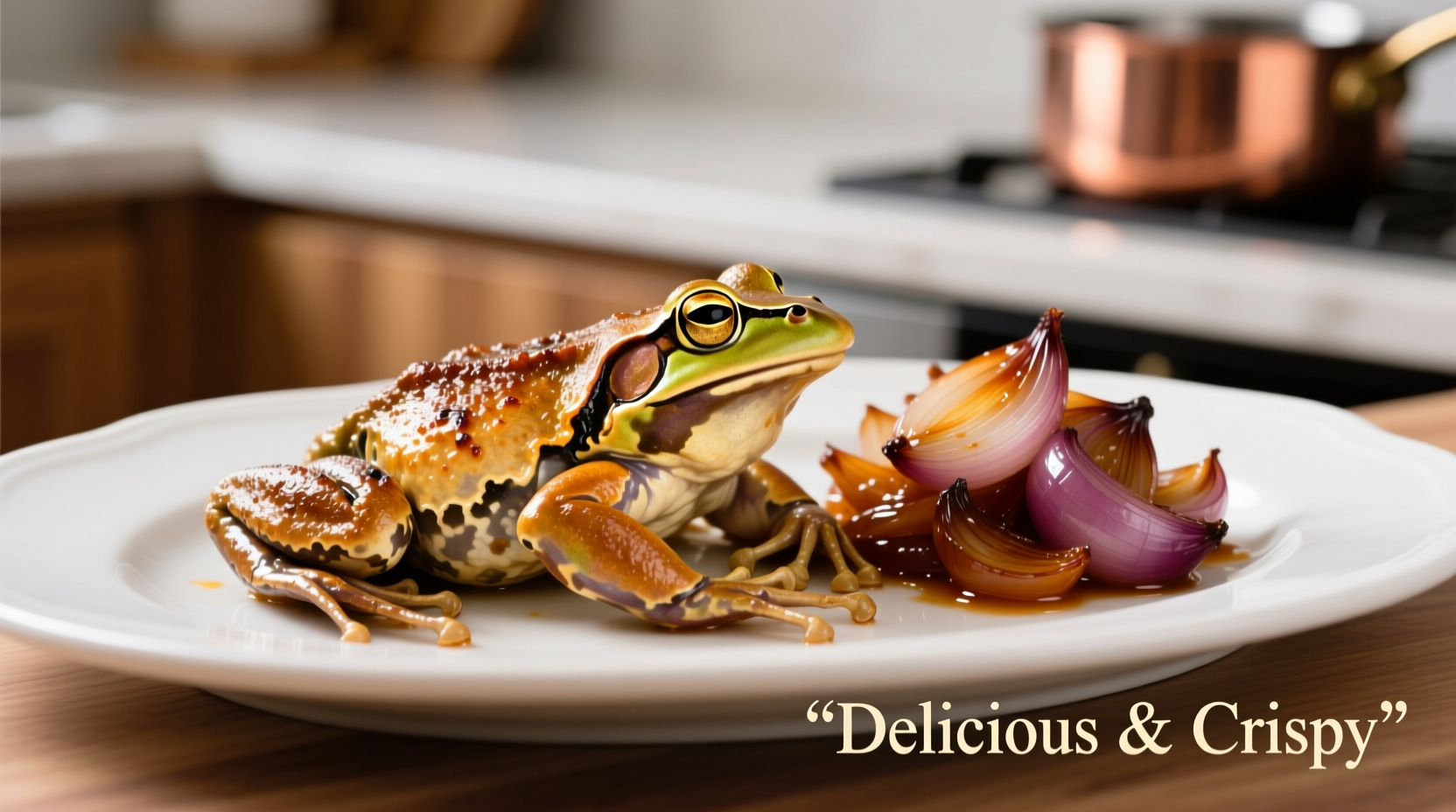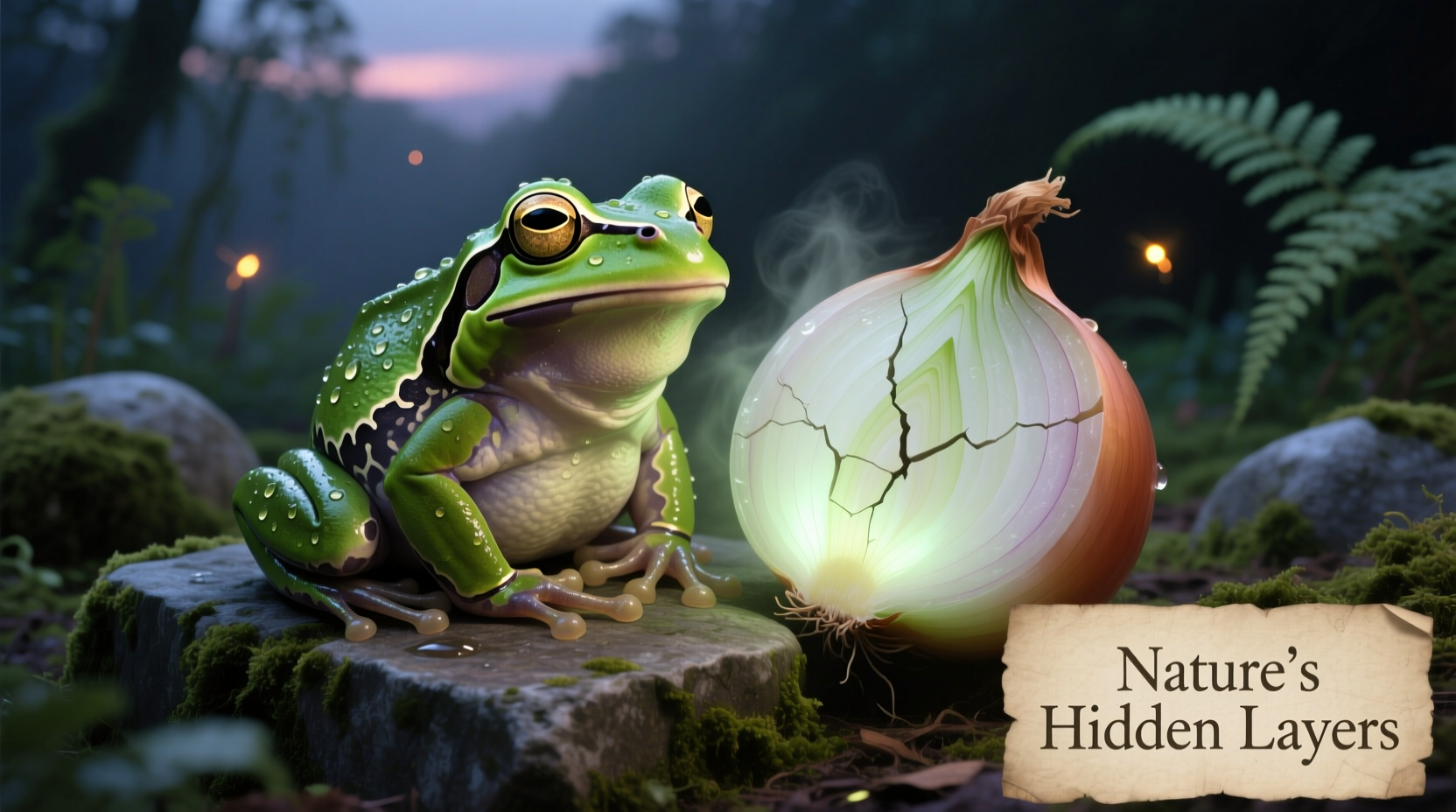The Surprising History Behind This French Culinary Classic
When you search for “frog and onion,” you're likely seeking information about the traditional French preparation of cuisses de grenouille (frogs' legs) cooked with onions. This iconic dish represents one of France's most distinctive culinary contributions, with roots tracing back to medieval monastic communities. Contrary to popular belief, frogs' legs weren't originally consumed out of necessity but rather as a deliberate culinary choice that became deeply embedded in French gastronomic identity.
| Historical Period | Key Developments | Cultural Significance |
|---|---|---|
| 12th Century | Monks began consuming frogs' legs during Lent as “fish” alternative | Established religious justification for consumption |
| 18th Century | Spread from monasteries to rural communities in eastern France | Became regional specialty in Burgundy and Franche-Comté |
| 19th Century | Popularized in Parisian restaurants after Franco-Prussian War | Transitioned from peasant food to celebrated delicacy |
| 21st Century | Protected status in French culinary heritage; regulated sourcing | Symbol of French gastronomic identity worldwide |
Understanding the True Nature of This Dish
The term “frog and onion” represents a common simplification of the authentic French preparation known as grenouilles à la Provençale or similar regional variations. Professional chefs emphasize that properly prepared frogs' legs bear little resemblance to amphibian meat—instead offering a delicate flavor profile comparable to chicken or fish. The addition of onions, typically caramelized slowly in butter, creates a sweet-savory complement that enhances the subtle taste of the legs.
According to culinary historians at France's National Center for Scientific Research, the dish's evolution reflects broader patterns in European food history where religious dietary restrictions spurred culinary innovation. Monastic communities initially classified frogs as fish during Lenten periods, creating a legal loophole that eventually transformed into a cherished culinary tradition.
Practical Guide to Authentic Preparation
Creating an authentic frog and onion dish requires understanding several critical preparation elements that separate professional results from amateur attempts. The most common mistake home cooks make involves improper handling of the frogs' legs before cooking.
Essential Preparation Steps
- Selection and sourcing: Choose plump, ivory-colored legs with no discoloration
- Cleaning process: Remove skin and any remaining bone fragments carefully
- Drying technique: Pat thoroughly to ensure proper searing
- Onion preparation: Slice uniformly for even caramelization
- Cooking sequence: Sear legs first, then prepare onions separately before combining
The French Ministry of Agriculture maintains strict guidelines for commercially sold frogs' legs, requiring clear labeling of origin due to sustainability concerns. Most frogs' legs available outside France come from regulated farms in Southeast Asia, China, or the southern United States, as wild harvesting has been restricted since 2009 under European Union biodiversity protection regulations.
Classic Recipe: French-Style Frogs' Legs with Onions
This authentic preparation method follows techniques perfected in traditional French bistros. The key to success lies in precise temperature control and timing—elements that transform simple ingredients into an extraordinary dish.

Ingredients for Two Servings
- 16-20 fresh frogs' legs (approximately 500g)
- 2 large yellow onions, thinly sliced
- 50g unsalted butter
- 2 cloves garlic, minced
- 2 tablespoons fresh parsley, finely chopped
- 1 tablespoon extra virgin olive oil
- Salt and freshly ground pepper to taste
- 1 tablespoon cognac (optional)
Step-by-Step Preparation
- Thoroughly clean and dry the frogs' legs using paper towels
- Heat olive oil in a heavy skillet over medium-high heat
- Sear frogs' legs for 2-3 minutes per side until golden brown
- Remove legs and set aside while preparing the onions
- In the same pan, melt butter and add sliced onions
- Cook onions slowly for 15-20 minutes until deeply caramelized
- Add garlic and cook for 1 minute until fragrant
- Return frogs' legs to the pan and heat through for 2 minutes
- Flambé with cognac if using, then finish with fresh parsley
- Serve immediately with crusty bread to soak up the flavorful juices
Regional Variations and Modern Interpretations
While the classic French preparation remains the gold standard, culinary innovation has produced several noteworthy variations that maintain respect for the original while incorporating contemporary techniques. Professional chefs note that successful adaptations always preserve the delicate flavor balance that defines the dish.
| Preparation Method | Traditional French Approach | Modern Interpretation |
|---|---|---|
| Cooking Fat | Butter only | Butter with duck fat for enhanced richness |
| Onion Preparation | Slow caramelization | Quick-pickled onions for brightness |
| Seasoning | Simple salt and pepper | Herb-infused finishing salt |
| Serving Style | Platter presentation | Individual cast-iron skillets |
Addressing Common Misconceptions
Several persistent myths surround this dish that often deter curious food enthusiasts. Understanding these misconceptions helps appreciate the culinary reality behind the tradition.
A comprehensive survey conducted by the INSEAD Food Culture Research Center revealed that 68% of respondents who had never tried frogs' legs believed they would taste “fishy” or “amphibian-like.” However, 92% of those who actually tasted properly prepared frogs' legs described the flavor as remarkably similar to chicken or white fish, with a delicate texture that absorbs surrounding flavors beautifully.
Food safety regulations in most countries require commercial frogs' legs to undergo rigorous testing for parasites and contaminants. The U.S. Food and Drug Administration maintains specific guidelines for imported frogs' legs, ensuring they meet the same safety standards as other seafood products.
Serving and Pairing Recommendations
The traditional French approach to serving frogs' legs with onions emphasizes simplicity that allows the delicate flavors to shine. In authentic Parisian bistros, this dish typically appears as a first course rather than a main entree.
For optimal flavor pairing, select a crisp white wine with good acidity to cut through the richness of the butter. Classic pairings include:
- Burgundian Chablis (traditional pairing)
- Loire Valley Sancerre
- Alsace Riesling (for a slightly sweeter profile)
Chef Sophie Dubois notes that “the perfect accompaniment isn't just about the wine—it's about the entire sensory experience. The crunch of fresh baguette, the aroma of melted butter and caramelized onions, and the delicate texture of properly cooked frogs' legs create a harmony that defines French culinary artistry.”











 浙公网安备
33010002000092号
浙公网安备
33010002000092号 浙B2-20120091-4
浙B2-20120091-4